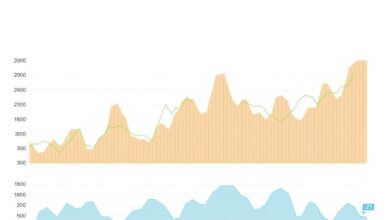Understanding risk tolerance before investing

Define your financial objectives clearly. This foundational step will guide you in determining the level of volatility you can comfortably handle while pursuing your goals. Assessing your personal finance aspirations helps in crafting a tailored approach that aligns with both short-term needs and long-term ambitions.
Next, identify key elements that shape your risk profile, such as age, income, investment horizon, and emotional comfort with fluctuations in market value. A younger investor may benefit from a more aggressive approach due to a longer timeframe for recovery from potential losses, whereas someone nearing retirement might prioritize capital preservation.
Implement a strategy that reflects your unique circumstances and preferences. Diversification across various asset classes can mitigate potential downsides while allowing for growth opportunities. Regularly revisiting this assessment ensures that your financial plan remains aligned with any changes in your life situation or market conditions.
Understanding Risk Types
Identify the categories of threats to establish a solid investment strategy. Broadly, risks can be segmented into market risk, credit risk, liquidity risk, and operational risk. Each type plays a significant role in shaping your investment profile.
Market fluctuations are a primary concern; they arise from changes in economic conditions or investor sentiment. Assess how comfortable you are with price volatility. If rapid declines in value cause discomfort, consider allocating more funds to stable assets.
Credit risk involves the possibility of default by issuers of securities. Evaluate your investment choices based on their credit ratings and historical performance to align them with your comfort zone.
Liquidity risk pertains to the ease of converting an asset into cash without significantly affecting its price. Investments like real estate may yield higher returns but often come with increased illiquidity. Ensure your planning accommodates both immediate needs and long-term goals.
Operational risk encompasses failures in systems or processes within an organization. Investing in well-established companies with robust governance structures can mitigate this threat effectively.
Your investment strategy should reflect a balance among these types of risks, tailored to fit your individual profile and objectives. Regular reviews will ensure alignment as market conditions evolve and personal circumstances change.
Identifying Personal Financial Goals
Define clear financial objectives to create a robust investment strategy. This clarity helps align your choices with your comfort zone and influences your risk profile.
- Short-Term Goals: Identify immediate needs, such as saving for a vacation or an emergency fund. Aim for liquidity and lower volatility in investments.
- Medium-Term Goals: Consider goals like buying a home or funding education. Balancing growth and safety is key; explore diversified portfolios.
- Long-Term Goals: Retirement planning should be prioritized. Focus on growth-oriented assets that can withstand market fluctuations over time.
Once you have outlined these objectives, establish timelines and specific monetary targets. This will aid in formulating actionable plans tailored to your personal finance landscape.
- Create a Budget: Assess income and expenditures to allocate funds towards each goal effectively.
- Monitor Progress: Regularly review financial performance against set milestones, adjusting strategies as needed to stay aligned with your objectives.
- Stay Flexible: Life changes may require goal adjustments. Remain adaptable to ensure continued alignment with evolving financial aspirations.
Your investment choices should reflect both the nature of these goals and the comfort level associated with potential outcomes. Thoughtful planning ensures that each step taken is purposeful, fostering a solid foundation for future growth.
Evaluating Market Conditions
Monitor macroeconomic indicators like GDP growth, unemployment rates, and inflation. These factors influence market dynamics and impact asset performance. When economic conditions are stable, consider a balanced strategy that aligns with your comfort zone.
Utilize technical analysis to assess price trends and trading volumes. Identify support and resistance levels to better understand potential entry and exit points. This data can refine your approach based on current market behavior.
Stay informed about geopolitical events and regulatory changes that may affect sectors of interest. A robust personal finance plan should account for these variables, adjusting your investment choices according to the evolving landscape.
Review market sentiment through investor surveys and analyst reports. Recognizing prevailing attitudes can help you gauge whether it’s prudent to adopt an aggressive or conservative stance based on your risk profile.
Incorporate diversification strategies to mitigate exposure during volatile periods. Spreading investments across various asset classes can enhance resilience against sudden market shifts while maintaining alignment with financial goals.
Tools for Risk Assessment
Utilize risk assessment questionnaires to gauge your comfort level with various investment scenarios. These tools typically ask questions about your financial situation, investment experience, and reactions to market fluctuations, helping you create a comprehensive risk profile.
Portfolio simulators are invaluable for visualizing potential outcomes based on different strategies. By inputting your asset allocation, you can see how various economic conditions might impact your investments over time. This aids in aligning your strategy with personal finance goals.
Consulting with financial advisors who use advanced modeling software can provide tailored insights. These professionals can analyze historical data and forecast future trends to help identify suitable investment opportunities while keeping within your defined comfort zone.
Online platforms often offer risk assessment tools that incorporate behavioral finance principles. These features help users understand emotional responses to market changes, allowing for adjustments in strategy that align with individual preferences.
Regularly review and adjust your assessments as market conditions evolve. This ensures that your approach remains aligned with both personal objectives and the dynamic nature of investing.
Adjusting Strategies Over Time
Regularly reevaluate your investment strategy to align with changes in your risk profile and personal finance situation. Begin by assessing life events such as career shifts, family growth, or retirement plans; these factors may necessitate a shift in your approach.
Consider adjusting the asset allocation within your portfolio. As you grow more comfortable with market fluctuations, you may choose to increase exposure to equities for potential higher returns. Conversely, during periods of economic uncertainty, reallocating funds towards bonds or cash equivalents can provide stability.
Establish a routine for reviewing your financial goals. As objectives evolve–whether it’s saving for education or planning for retirement–your investment strategy should reflect those priorities. Set specific intervals for these evaluations, such as annually or after significant market movements.
Stay informed about external conditions impacting markets. Economic indicators like interest rates or inflation can signal when it’s time to modify your strategy. Awareness of these trends helps maintain a proactive rather than reactive stance.
Utilize financial tools that help track progress towards goals and visualize potential outcomes based on various scenarios. Simulation software and risk assessment calculators can offer insights into how different strategies might perform over time.
Avoid becoming complacent within your comfort zone; adaptability is key to successful investing. Embrace the necessity of change and be prepared to pivot when circumstances dictate. This flexibility will enhance resilience in achieving long-term financial aspirations.







